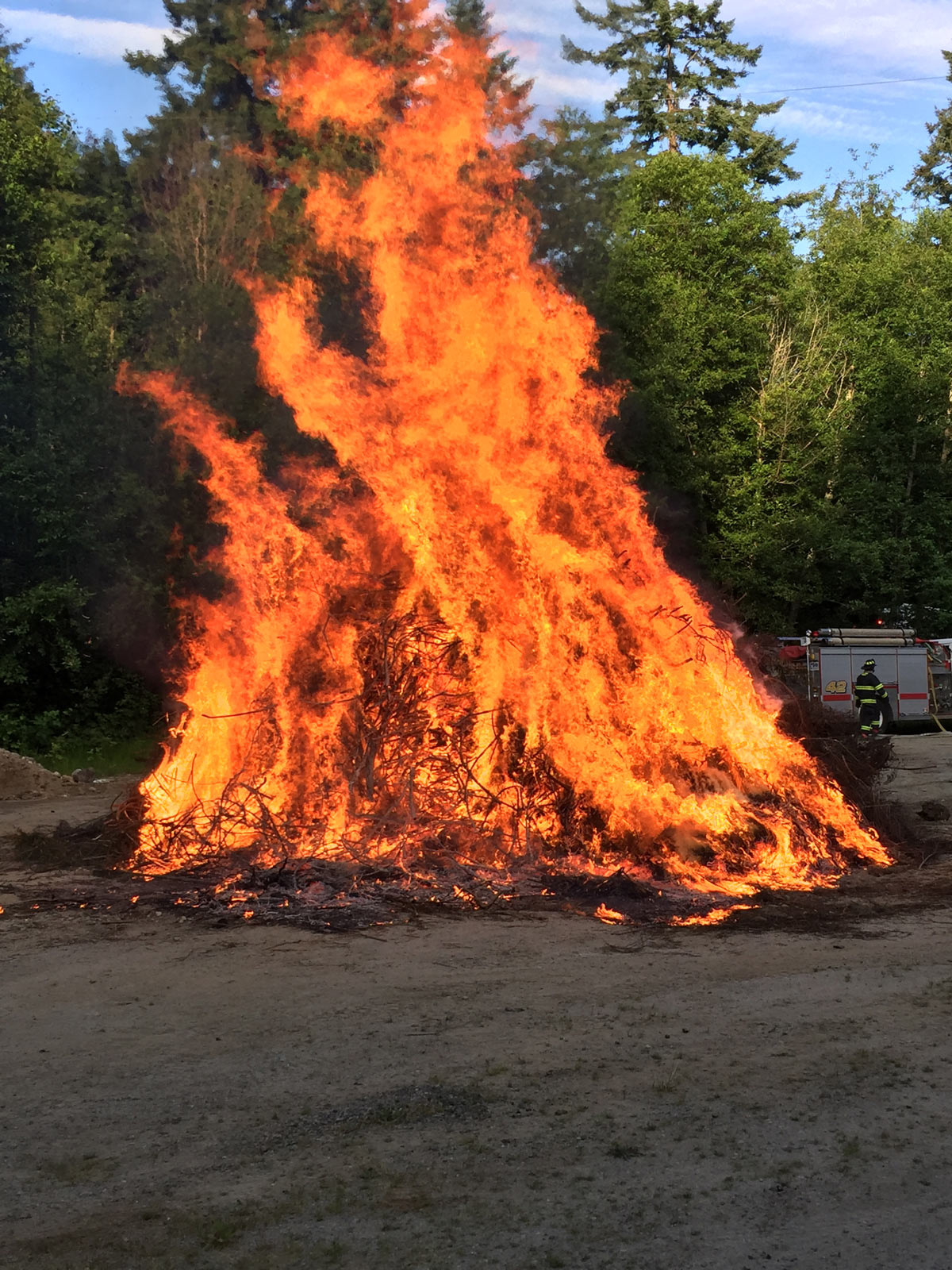Dear UBCM Delegate,
We ask for your support of Resolution NR51: Control of Scotch Broom at the upcoming UBCM Conference, we. This same resolution was passed unanimously by AVICC, April 2023. Coastal Communities know how aggressive and relentless Scotch broom is, and the harm it does to BC’s ecosystems. (You can see this by scanning the following 7 slides.) Now broom is spreading on the mainland. This is a friendly warning from the Coastal Communities: Stop the spread while you have a chance.
CLIMATE CHANGE and Highly Flammable Broom. Scotch broom is a volatile flash fuel with high oil content and dry branches. It forms dense thickets of flammable material, dramatically increasing the risk of wildfires and urban interface fires.
Scotch broom makes fighting fires more dangerous: “Scotch broom’s high flammability and its ability to spread quickly and form dense stands increases the fuel load, impeding fire management efforts, making fires more difficult to fight.” Terry Peters, Retired Fire Chief Powell River. “Two invasive species cause fire behaviour and control concerns: broom and gorse.” BC Wildfire Service
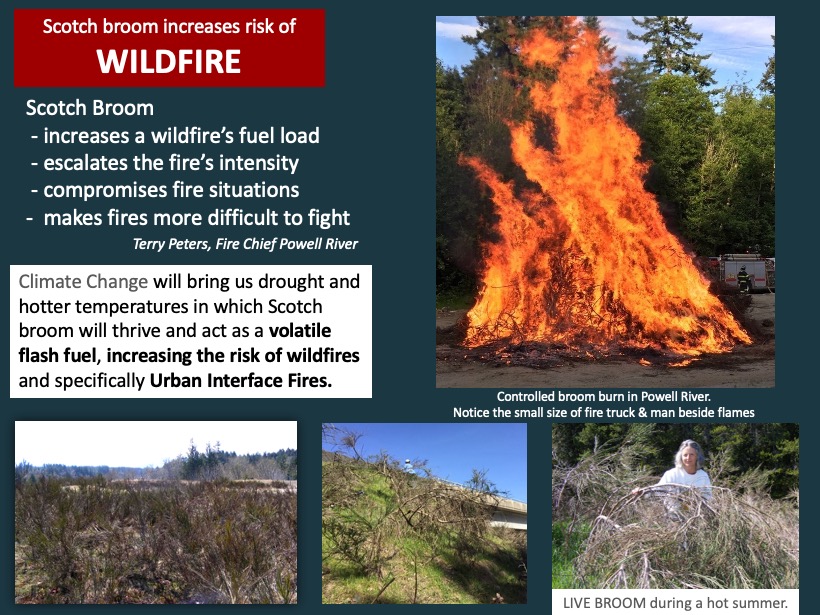
********We are in a Worldwide BIODIVERSITY CRISIS. Scotch broom is the Top Offender of Biodiversity.* Broom quickly takes over natural habitat and crowds out native species, including forest seedlings. The loss of native plants harms insects, bees and birds.
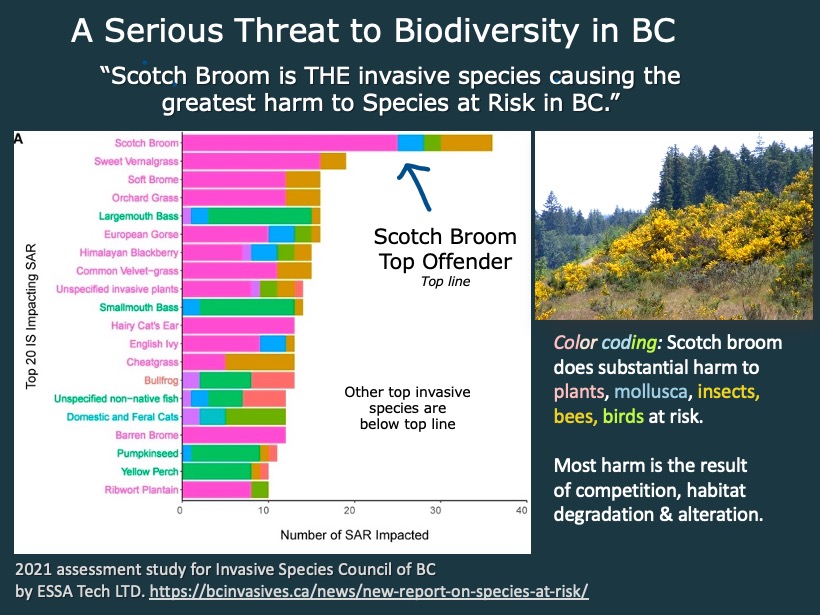
********Scotch broom has reached critical mass in BC. Its spread is now increasing exponentially. A mature Scotch broom plant produces 18,000 seeds – viable in the soil for over 30 years. In photos below, Scotch broom (and gorse) took over whole mountains in New Zealand, as it has in many places in the world. If nearby, Scotch broom will take over burned forest areas.
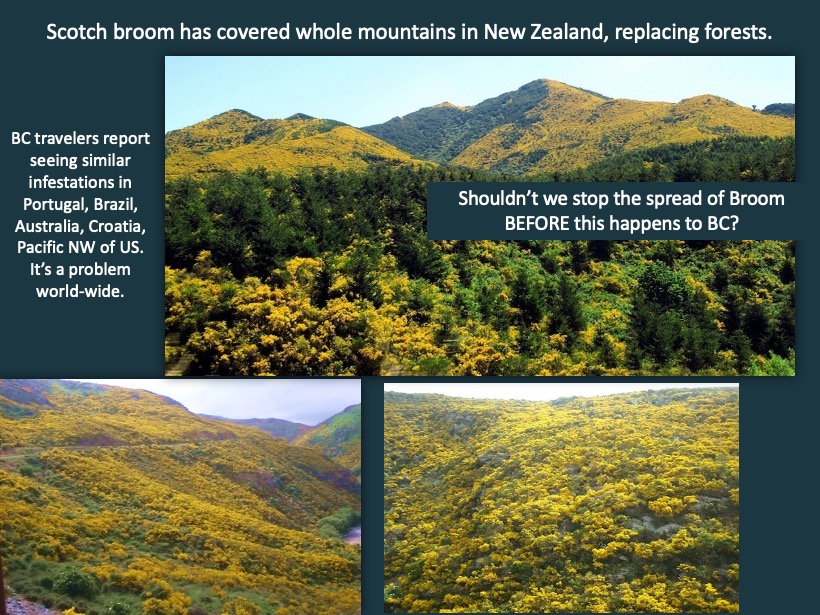
********
Negative Economic Impact for forestry, farming, food security, recreation and tourism. BC Ministry of Forests: “Scotch broom invades cutblocks and competes with tree seedlings, …alters soil chemistry as it fixes nitrogen, is highly flammable and resprouts following fire, and displaces native vegetation. Seeds can remain viable in the soil for over 70 years, and readily germinates following soil disturbance.”
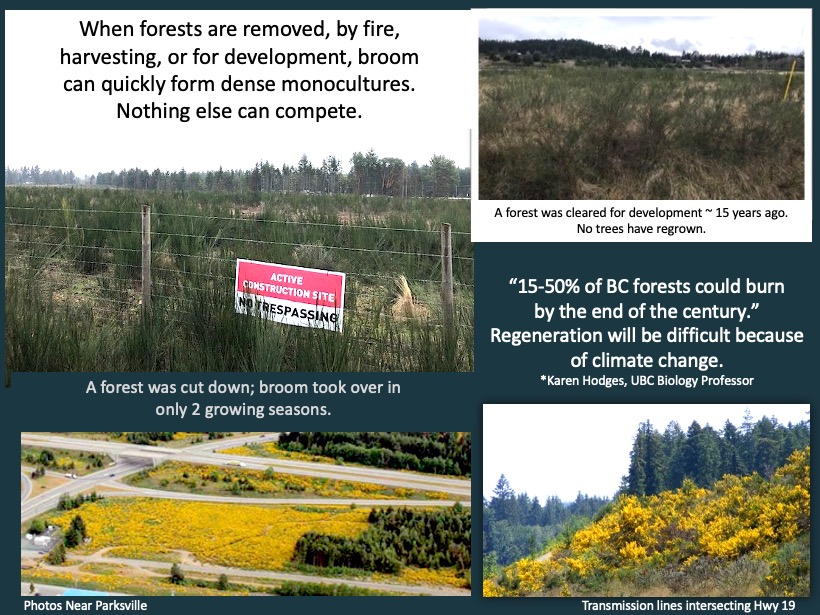
Farming: Scotch Broom is called “the Scourge of Pastureland.” Scotch broom is toxic to grazing domestic and wild animals. Also, it is very hard to reclaim fields after broom is established.
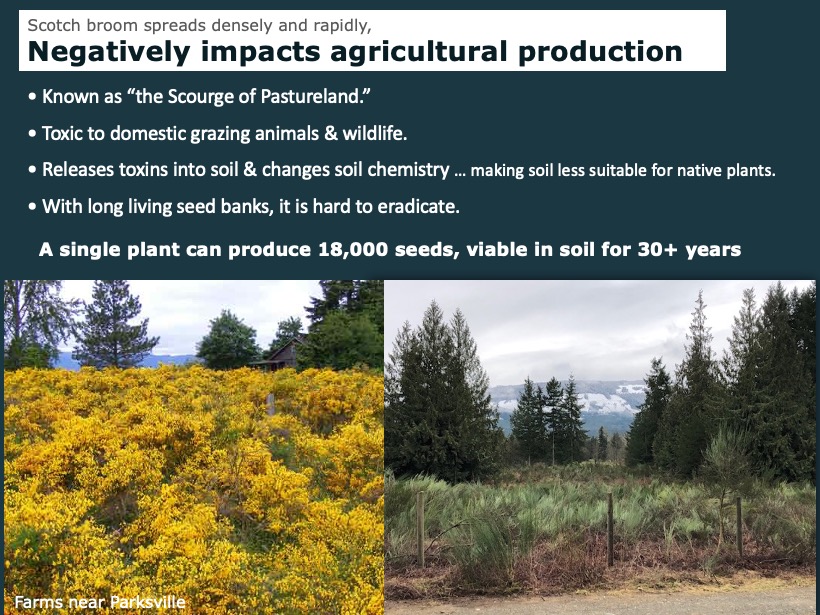
Municipalities: Spread of Scotch broom increases workload and expense to municipalities. Most bylaws are passed as part of unsightly property bylaws.
********
Scotch broom is spreading across the Province of B.C. and will only get worse unless we do something.
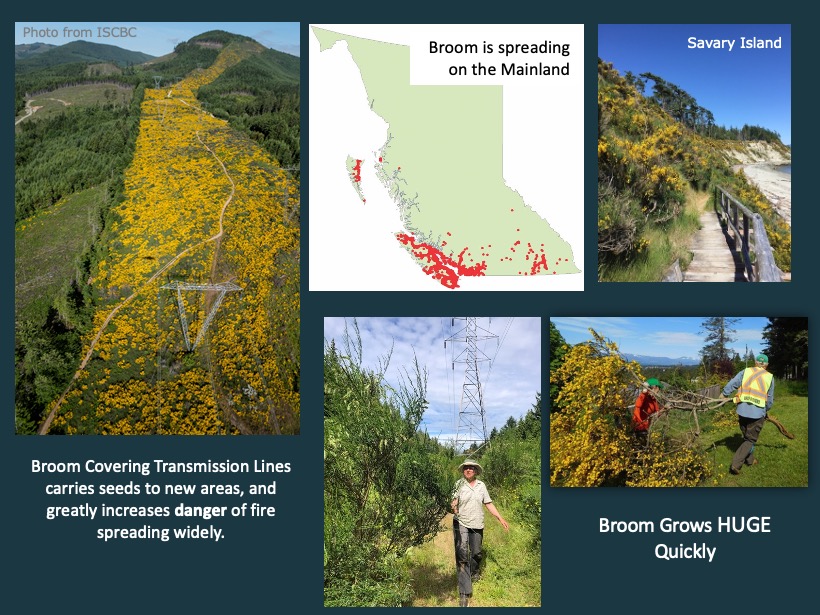
Resolution NR51 is deliberated non-specific, as situations vary dramatically. As recommended by Invasive Species Councils: if Scotch broom is new in your area – eradicate immediately! If established, stop the spread, and condense infested areas. Solving this problem will require creativity, cooperation, commitment, and communication among all parties.
Please support the passing of Resolution NR51 submitted by the Town of Qualicum Beach.
Thank you for your time and consideration,
Joanne Sales
Executive Director of Broombusters Invasive Plant Societywww.broombusters.org
If you have any questions or seek more information about how to stop the spread of Scotch broom, please reach out to me, as Broombusters has been successfully eradicating Scotch broom from municipalities and regional districts for 17 years. Broombusters’ website: www.broombusters.org.
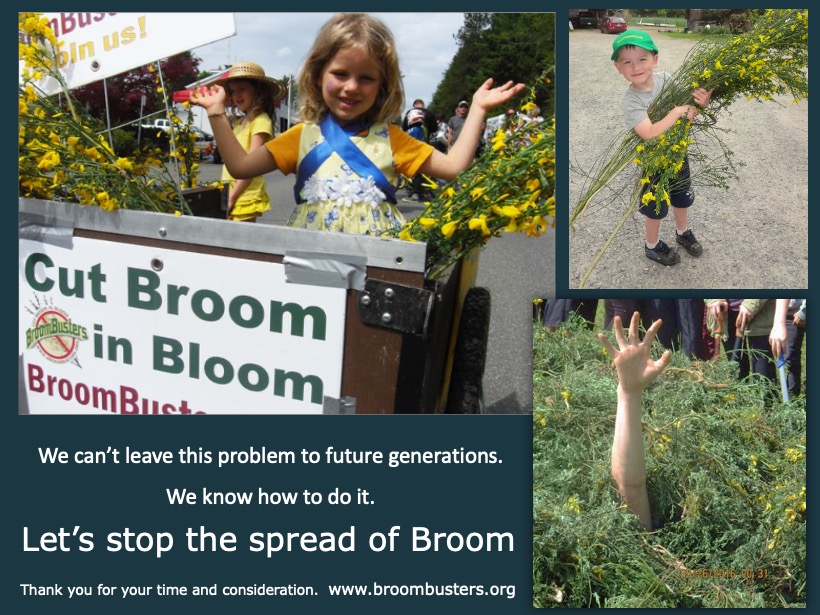
Resolution NR51: Control of Scotch Broom (Cytisus Scoparious)
WHEREAS Climate Change brings us longer periods of drought and hotter temperatures in which Scotch broom, a highly flammable invasive species with high oil content and dry branches, will thrive and act as a volatile flash fuel, increasing the risk of wildfires and specifically urban interface fires; and
WHEREAS Scotch broom spreads densely and rapidly inhibiting forest re-growth and negatively impacting agricultural production and native species, with a 2021 study for the Invasive Species Council of B.C. (ISCBC) designating Scotch broom as the top worst offender – the invasive species doing the greatest harm to species at risk in B.C.;
THEREFORE, be it resolved that, AVICC and UBCM work with the Province to establish and implement actionable steps to control the aggressive spread of Scotch broom all across B.C. including implementing broom-free fire breaks along long stretches of broom while local governments are encouraged to use bylaws and policies to control and manage Scotch broom near and within urban boundaries.
____
PEOPLE CARE about the spread of Scotch broom and they want to see action.
There are many dedicated environmental groups cutting broom – and cutting works! Broombusters alone has between 600-700 volunteers cutting broom 6-7000 hours each spring.
MOTI has supported Broombusters since 2003. Many municipalities actively support Broombuster volunteers cutting broom: Qualicum Beach, Parksville, Nanaimo, Lantzville, Cumberland, Comox, Courtenay, Campbell River, North Cowichan, Ladysmith, Powell River, Sooke and Coquitlam. There were also volunteers working in the RDN, ACRD, CVRD, Ucluelet, Tofino, Gabriola Island, Lake Cowichan, District of Highlands, Youbou and new volunteers near Nelson.

